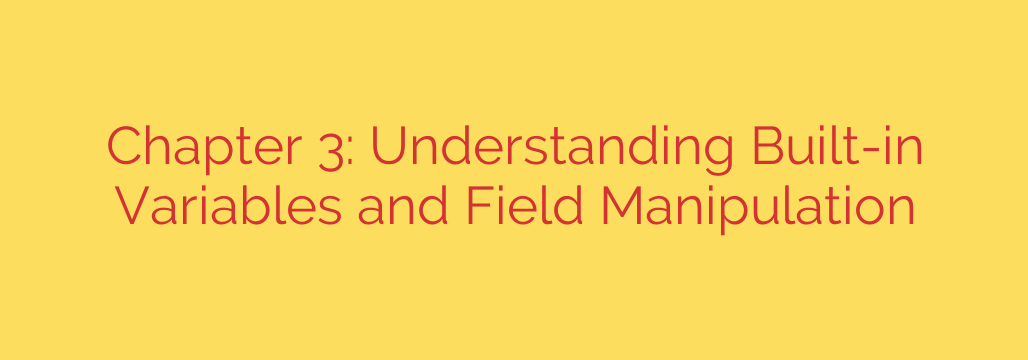
Mastering Data Processing: Understanding Built-in Variables and Field Manipulation
Processing text data effectively is a fundamental skill in many technical roles, from system administration to data analysis. Often, this involves working with structured lines of text, where each line represents a record and elements within that line are individual fields. To efficiently handle this, understanding built-in variables and how to manipulate these fields is crucial.
Think of a simple comma-separated value (CSV) file. Each line is a record, and the data between the commas are the fields. Tools designed for text processing provide powerful mechanisms to read these records, break them into fields, and perform operations based on the content or structure.
Built-in Variables: Your Data’s Metadata
Built-in variables are special variables automatically provided by the processing tool. They offer essential information about the current record being processed and its fields, without you needing to calculate it manually. Leveraging these variables allows for dynamic and context-aware processing.
Some of the most common and useful built-in variables include:
- Record Number (e.g.,
NRor similar): This variable tracks the sequential number of the current input record (line) being processed. It’s invaluable for adding line numbers, processing only specific records, or performing actions every ‘N’ lines. - Number of Fields (e.g.,
NFor similar): This variable holds the total count of fields detected in the current record. Knowing the number of fields is essential for checking data integrity, iterating through all fields, or handling lines with variable structures. - Field Separator (e.g.,
FSor similar): This variable defines the character or pattern used to separate fields within a record (e.g., comma, tab, space). While often set once, understanding it is key to correctly parsing your data. You might also encounter variables for the Output Field Separator (OFS) and Output Record Separator (ORS).
These variables give you immediate insight into the data you’re working with at any given moment, enabling more flexible and robust processing scripts.
Accessing and Manipulating Fields
Beyond knowing the metadata, the real power comes from being able to access and change the data within the fields themselves.
Fields are typically referenced by their position within the record. The entire current record is often represented by a special variable (e.g., $0), while individual fields are referenced using a dollar sign followed by the field number (e.g., $1 for the first field, $2 for the second, and so on). Remember that the number of fields (NF) variable can be used to refer to the last field ($NF), which is a very common and useful technique.
With this referencing system, you can:
- Extract specific columns: Easily print or use the data from
$1,$3, or any other field. - Filter based on field content: Process a record only if a specific field contains a certain value or matches a pattern.
- Rearrange data: Change the order in which fields are outputted.
- Modify field values: Change the content of a field directly. For instance, you could convert a field to uppercase, perform calculations on a numeric field, or replace a substring within a field.
- Add or remove fields: By manipulating how fields are printed or by concatenating data, you can effectively add new fields or exclude existing ones from the output.
Actionable Tips for Effective Field Manipulation:
- Know your separator: Always be explicit about your field separator (
FS) if it’s not the default (often whitespace). This prevents parsing errors. - Validate
NF: Before attempting to access a field, especially in scripts processing diverse data, check theNFvariable to ensure the field exists in the current record. Accessing a field beyondNFmight result in empty data or errors. - Use
$NFfor the last field: This is a reliable way to access the final piece of data in a record, regardless of how many fields there are. - Be mindful of quoting: When fields themselves contain the field separator or spaces, ensure your data source properly quotes those fields, and your processing tool handles quoting correctly to avoid misinterpreting field boundaries.
Understanding built-in variables and mastering field manipulation techniques provides a powerful toolkit for anyone working with text-based data. These concepts form the backbone of many data cleaning, transformation, and reporting tasks performed efficiently from the command line or within scripts. By effectively utilizing these features, you can unlock significant flexibility and processing power.
Source: https://linuxhandbook.com/awk-built-in-vars/








